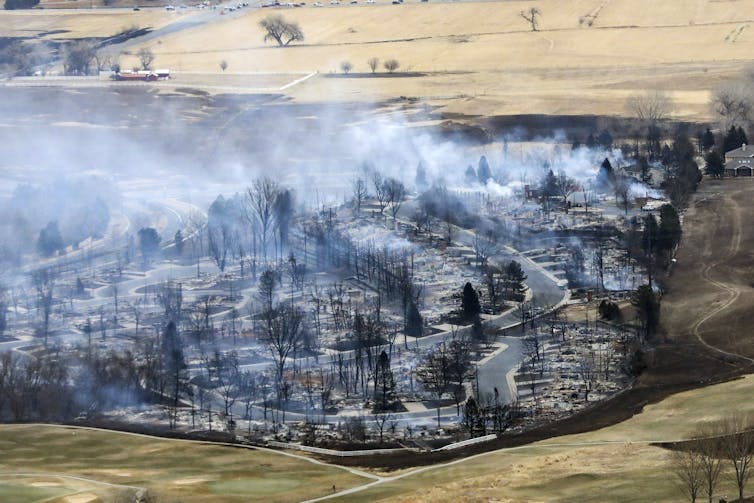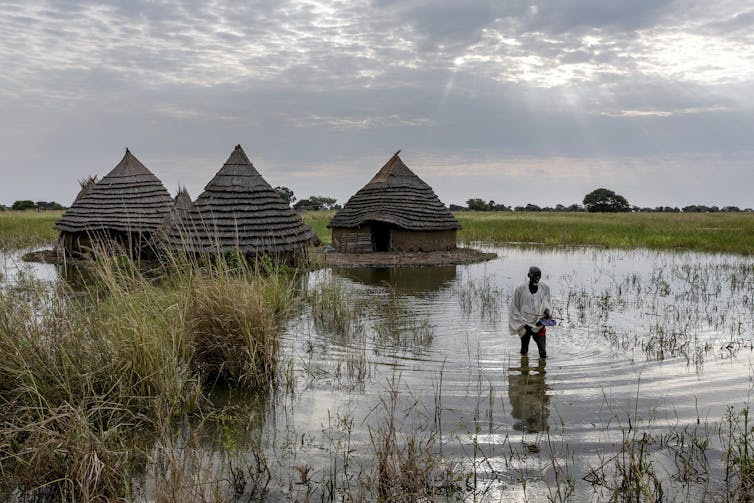

Matthew Hoffmann receives funding from Social Science and Humanities Research Council. He is affiliated with the NGO Green Economy Canada.
University of Toronto apporte des fonds en tant que membre fondateur de The Conversation CA.
University of Toronto apporte un financement en tant que membre adhérent de The Conversation CA-FR.
Voir les partenaires de The Conversation France
Well, this is beginning to feel old: 2021 was another year of climate catastrophes — just like the one before it.
Yet another year of fires and floods, with more beckoning for 2022. And, like last year, there are desperate calls for 2022 to be a year of accelerated climate action. It has to be, in so many ways (technological, social, economic, political), if we are to avoid the worst effects of climate change.
Yet one thing that’s different in 2022 than years past is that we we now have a completed, functioning global climate treaty. At the November 2021 COP26 meeting in Glasgow, the international community finalized the remaining details of the Paris Agreement.

Much of the world, or at least the media in North America and the United Kingdom, met this news with confusion. CNN, the Economist, the Globe and Mail and even CBC Kids ran stories asking the same question: “Was COP26 a Success?”
The consensus that emerged in the media and among columnists was that some progress was made even if it didn’t fix climate change. Environmental activists were more certain: COP26 was a failure.
Both reactions are reasonable because two facts about climate action uncomfortably coexist.
The Paris Agreement is a context for climate action, not action itself. Its main substance is a collectively agreed goal (keep warming to 1.5 C) and it mandates that countries develop their own climate plans, which they have mostly done and some have even ratcheted them up since 2015.
It also provides infrastructure for collective reporting and monitoring of plans with common metrics, for taking stock of how states’ commitments translate to the overarching goal, for developing a global carbon market and mobilizing finance for the Global South. After Glasgow, most of this is now in place.
Yay! The Paris Agreement is working … and yet the climate is still burning.
Unfortunately, the Paris Agreement can work perfectly and states’ individual efforts can still come up short. The Paris Agreement is a means, not an end.

Turning this global institutional context into an effective global response to climate change requires ambitious national action. The Paris Agreement will succeed in the broader sense if states ramp up the ambition and implementation of their climate plans. That’s the whole ballgame. Fortunately, the Paris Agreement infrastructure and approach provide some mechanisms to encourage this.
The co-operative infrastructure — especially transparency and common reporting timelines and metrics for greenhouse gas emissions and national climate actions — may help catalyze virtuous cycles of increasing ambition. Even though the Paris Agreement relies on individual instead of joint commitments, countries are still wary about moving ahead of their peers and competitors. Having transparent national commitments with standardized reporting is potentially a way to alleviate those concerns.
Efforts to mobilize finance need to be drastically improved, however. This was a major sticking point at COP26 that almost derailed the conference.
States in the Global North are seriously underperforming on their pledged commitments on climate and adaptation finance. They have come up at least US$20 billion short on a US$100 billion per year pledge — an amount itself considered “miniscule” compared to what’s ultimately necessary. Mobilizing finance for the Global South was a key bargain that made the Paris Agreement itself possible and its future success depends on this commitment being fulfilled.
These mechanisms, however, rely on countries wanting to act with enthusiasm and equity. That’s the necessary change and it’s what climate activists took to the streets around the world to demand. The logic of accountability and inclusion built into the Paris Agreement offers opportunities to instigate change.

First, accountability in the Paris Agreement is largely external — the agreement itself doesn’t have enforcement mechanisms because decisions and actions are taken domestically. This provides citizens and activists with concrete targets — national climate plans.
We need more national legislation like Canada’s Net Zero Accountability Act. We need citizen pressure to continue ratcheting up national ambition and implementation to ensure that such legislation isn’t greenwashing.
Second, the Paris Agreement recognizes the importance of mobilizing the full range of corporations, cities, provinces, NGOs, communities and so on to meet the 1.5 C target. The work done by these non-state and sub-state players can change what countries see as possible and appropriate climate action.
So, we have Paris and that’s a good thing, somewhat. It is working. It provides the infrastructure to do more; to do better. It’s not magic though. As Catherine Abreu, the executive director of the Climate Action Network, observed:
“The final outcomes of COP26 gives Canadians a clear image of where the world is at: united in the desperate hope to limit warming to 1.5 C and avoid the most irreversible impacts of climate change; divided on the scale of effort required to achieve that goal.”
The animating force for the Paris Agreement to truly succeed is the efforts that people, communities, NGOs and corporations deploy to make states see the necessity of the proper scale of effort. We have Paris, but hope for 2022 will be found in the movements and politics that are growing across the globe; in fighting for pandemic recovery plans that focus on justice, equity and sustainability; in the everyday actions of concerned individuals that build social momentum for change.